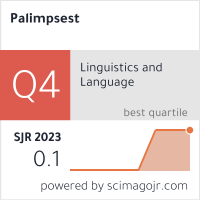İMDAT SANCAR AND BAYBURT SAĞDIÇ (BEST MAN’S) WEDDİNGS AS CULTURAL HERİTAGE
DOI:
https://doi.org/10.46763/PALIM23816117kAbstract
Bayburt, geographically located on the historical Silk Road that connects the Eastern Black Sea region with the Northeastern Anatolia region, is one of the ancient cities in the region. Throughout history, due to its location on the trade route, this city has been continuously inhabited, and it possesses a rich and deep cultural heritage. This cultural heritage, although constantly evolving in today’s digital world with rapid advancements in transportation and communication, has been largely preserved and passed down to the present day. In this regard, one of the most special cities in our country, Bayburt, has greatly benefited from individuals who both understand and actively preserve its culture. One of these individuals is İmdat Sancar. İmdat Sancar is one of the rare individuals who fit UNESCO’s definition of “culture bearers” with his knowledge of traditional folk songs, the songs he has composed, his participation in folk music events, and the traditional “sağdıç düğünü” (best man’s wedding) ceremonies he organizes. His special quality lies not only in his knowledge of the culture but also in his ability to actively practice and pass it on to others. The subject of this study is the traditional “sağdıç düğünü” (best man’s wedding) ceremonies known by İmdat Sancar. These ceremonies are actually categorized as village performance plays, falling within the realm of theatrical performances. These plays were collected from İmdat Sancar himself using interview methods and were analyzed from the perspective of Functional Theory. Content analysis was also conducted. As a result of the examination, it was determined that these plays serve various functions within the community and encompass a wealth of traditional knowledge and practices that are integral to people’s daily lives.
Keywords: Bayburt; best man’s wedding; theatrical village play; culture bearer.


